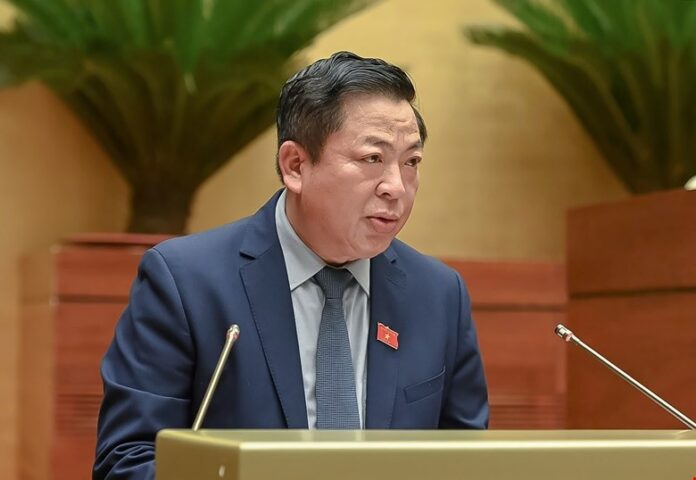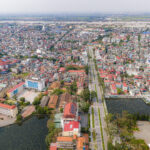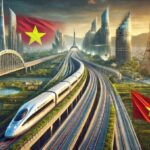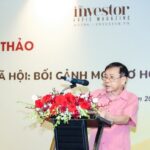Minister of Construction Tran Hong Minh, on behalf of the Prime Minister, presented a report on the draft Law on Railways (amended) with breakthrough developments for the railway sector.
The draft law introduces a new regulation to mobilize local resources and encourage other economic sectors to invest in the construction of railway infrastructure.
It includes provisions that promote the participation of organizations and individuals in developing railway infrastructure through various contract forms such as BT, BOT, BTO, BLT, and others.
“Local governments can use their budgets for compensation, resettlement support, and investing in specific items belonging to the national railway infrastructure,” said Minister Tran Hong Minh.
The draft also clarifies the responsibilities of stakeholders in constructing national, local, and dedicated railways.
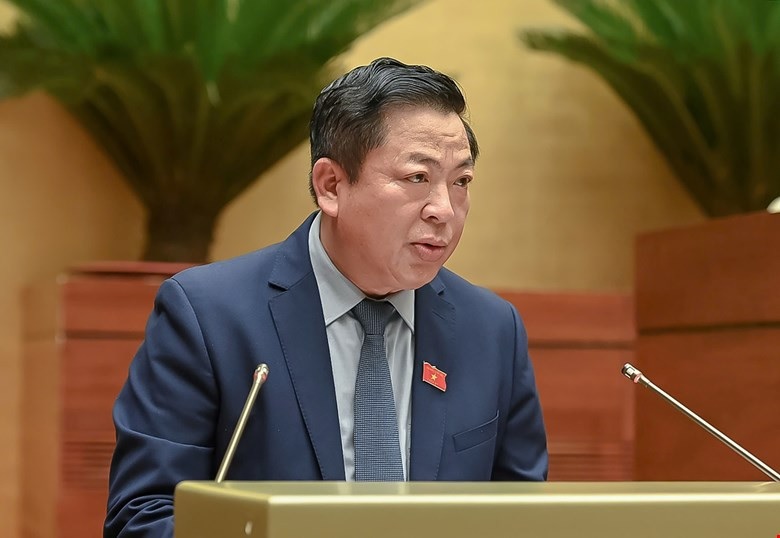 Minister of Construction Tran Hong Minh. Photo: National Assembly
|
These regulations provide a legal basis for investing in railway infrastructure. For example, investing in shared bridges for railways and roads (such as Lach Huyen Bridge and Can Tho Bridge 2)
Additionally, the draft amends and supplements regulations on leasing and transferring the right to exploit state-invested railway infrastructure assets to attract and diversify enterprise participation in railway management and development, such as “Public Leadership – Private Management,” “Public Investment – Private Management,” and “Private Investment – Public Use.”
Vehicle inspection procedures for railways are also adjusted to maximize business convenience while ensuring compliance with international practices. Administrative procedures related to evaluation, certification, and assessment are streamlined.
Notably, the draft introduces regulations to develop the railway industry and human resources. Certain high-tech railway industry products are prioritized, and policies attract investment to develop a robust railway industry, thereby creating a large enough market to support auxiliary industries.
Regarding decentralization and devolution, the draft proposes a substantial devolution of power to local governments in investing in and operating railway infrastructure. It transfers some authority from the Prime Minister to the Minister of Construction and local authorities.
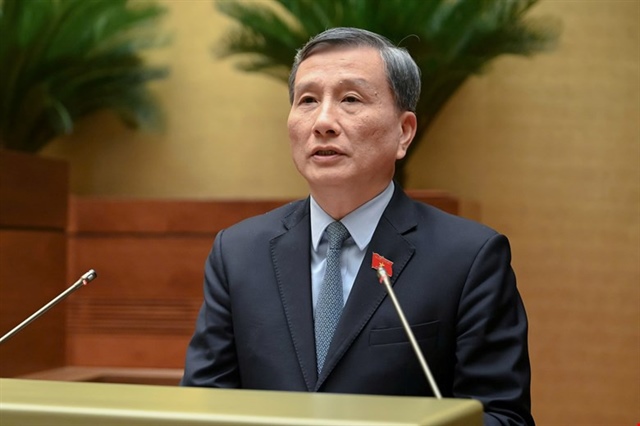 Chairman of the Science, Technology, and Environment Committee Le Quang Huy. Photo: National Assembly |
The Committee on Science, Technology, and Environment generally agrees with the title, scope, and subjects of the draft law. However, Le Quang Huy, the committee’s chairman, suggested clarifying the scope regarding urban railways, high-speed railways, and dedicated railways, as well as railway business and land fund exploitation around railway stations.
Regarding investment in the construction of railway works and the exploitation of the land fund around railway stations, the reviewing agency recommended that the Government report and seek opinions from competent authorities on mechanisms and policies to ensure compliance with the regulations of the Party and the laws of the State.
On the mechanism to support enterprises in transporting special tasks and social security, Mr. Le Quang Huy emphasized the need to clarify specific criteria for determining reasonable costs and the process of cost compensation for enterprises, including verification and inspection methods. He also suggested adding provisions on transparency in financial support for enterprises performing special tasks and social security.
The draft law significantly decentralizes power to local governments in investing in and operating railway infrastructure. It adjusts some authorities from the Government and the Prime Minister to the Minister of Construction and local authorities, as follows:
Decentralization to local governments for implementing ten administrative procedures: (i) approval of the construction of level crossings; granting and extending the validity of level crossing construction permits for local and dedicated railways; (ii) issuing certificates of registration for railway vehicles; (iii) issuing licenses for driving trains on dedicated and local railways.
Decentralization of content from the Prime Minister to the Minister of Construction: approving railway line and station planning. The Minister of Construction is authorized to specify the service life of railway vehicles instead of the Government, as stipulated in the 2017 Law on Railways.
The Vinh
“Massive Land Acquisition in Hai Duong: Over 3,000 Households Affected for Northern Vietnam’s Transportation Mega-Project”
The Hai Duong province plans to reclaim approximately 188 hectares of land, affecting 3,296 households, for the development of the Lao Cai – Hanoi – Hai Phong railway project.
“THACO Proposes High-Speed Rail Investment for North-South Corridor, Envisioning a 7-Year Construction Timeline”
“Vietnam’s leading automotive manufacturer, Truong Hai Auto Corporation (THACO), has expressed its interest in investing in the country’s high-speed North-South railway project. In a recent proposal to Prime Minister Pham Minh Chinh, THACO has showcased its ambition to diversify its portfolio and contribute to the nation’s infrastructure development.”
When Will Construction Begin on Hanoi’s Trần Hưng Đạo and Ngọc Hồi Bridges?
The plans to construct two new bridges over the Hong (Red) River in Hanoi, Vietnam, are well underway. With preparations almost complete, the investment plans for Tran Hung Dao Bridge and Ngoc Hoi Bridge are set to move forward, with construction commencing on either August 19th or, at the latest, September 2nd of this year. These two bridges will be part of a larger project, consisting of six bridges in total, spanning the majestic Hong River.


























